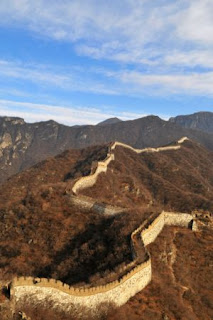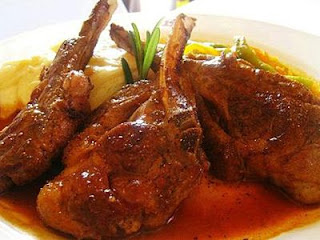2013年8月30日星期五
Want to Have a Jiuzhaigou Travel ?
Located in the north of Sichuan Province, Jiuzhaigou County (previously known as Nanping County until being renamed in 1998) is part of the Aba Tibetan and Qiang Autonomous Prefecture. Since the opening of the Jiuzhaigou Valley Scenic and
Historic Interest Area in 1984, visitors have flocked to the region year by year, and the prosperous tourist industry now accounts for a large proportion of local revenue.
Lying on the highest tableland in the world between the Sichuan Basin and the Qinghai-Tibetan Plateau, Jiuzhaigou Valley covers altitudes ranging from 2,000 meters (6,561 feet) to about 4,300 meters (14,107 feet). With large number of lake groups, waterfalls and rich variety of endangered plants and fauna, it was awarded the status of UNESCO Man and Biosphere Reserve in 1997 and was also recognized as a UNESCO World Heritage Site in 1992. The reserve has received a string of other titles including that of a National Geological Park, a AAAA Class Scenic Spot in China and a Green Globe 21.
2013年8月26日星期一
Have a Brief Introduction of Beijing Jingshan Park (Yingshan Gongyuan)
 On Sundays particularly this park is full of community activities. You are welcome to join in if you wish. There are community singing groups (You need Mandarin for that, but sheets with the words are provided). There are other musical groups, dancing groups, usually made up of those who know what they are doing and those who are learning.Some excellent musical performers can be heard, and a woman from the Peking opera may sing for you. These activities are common in Beijing parks; another which is good to visit is Yuyuantan Park which is just North of the Milleniun Monument, on Chang'an West. It has two adjoining lakes, with boats to hire and more simple games people play, with the experts happy to teach the beginners. It also has kite flyers.
On Sundays particularly this park is full of community activities. You are welcome to join in if you wish. There are community singing groups (You need Mandarin for that, but sheets with the words are provided). There are other musical groups, dancing groups, usually made up of those who know what they are doing and those who are learning.Some excellent musical performers can be heard, and a woman from the Peking opera may sing for you. These activities are common in Beijing parks; another which is good to visit is Yuyuantan Park which is just North of the Milleniun Monument, on Chang'an West. It has two adjoining lakes, with boats to hire and more simple games people play, with the experts happy to teach the beginners. It also has kite flyers.
2013年8月21日星期三
Eat And Shopping in Dashila Street
Dashilan street was a commercial center of Beijing more than five hundred and eighty years ago. The name Dashilan comes from the large gates built at either end of the street during the Qing Dynasty to prevent street crime at night and as
a safeguard against riots by the local Han people against the Qing. The fences built here were quite peculiar and kept for a long time.In 1900, the entire street was burnt to the ground during the Boxer uprising before it prospered again with the returning merchants.
Dashilan is situated on south of Tiananmen Square, west of Qianmen Dajie, where many century-old shops and Restaurant stand. You can buy some traditional handcrafts as well. Note that bargaining is always needed. Now its old shops and small stalls are still preferred by Beijingers.
2013年8月13日星期二
Have Ever Visit Badachu Park in Beijing
As a national AAAA Tourist Area, Badachu Park is located in the south foothills of well-known Beijing Xishan (Western Hills) Scenic Area. As one of the top-priority municipal protected cultural relic sites in Beijing since the founding of the P.R.China, Badachu Park has been a garden-based Buddhist temple, which is endowed with time-honored history, everlasting reputation and pleasant natural landscape. Badachu Park is surrounded by Cuiwei Hill (the remaining chain of
Western Hills), Pingpo Hill and Lushi Hill. These three hills are shaped like a chair. Eight ancient temples spread over these three hills, forming a famous natural sight of Twelve Landscapes. Badachu Park is world-renowned due to the tooth relic (the sacred sharira of Sakyamuni Buddha) preserved in two Lingguang Temples. The oldest temple in these eight ancient temples is Bachu Zhengguo Temple, its construction lasting from the late Sui Dynasty to the Early Tang Dynasty. Much further construction lasted through the Song, Yuan, Ming and Qing dynasties. The largest temple is Xiangjie Temple-a temporary imperial palace for Emperor Kangxi and Emperor Qianlong on their brief stays. Although Badachu Park was named after these eight ancient temples, some stone inscriptions engraved on the cliffs can date back to as early as the Ming Dynasty, have become the ninth attraction site in Badachu Park since their discovery in 2000. A large number of stone inscription hobbyists and Buddhists have come in a continuous stream to visit.
In recent years, Badachu Park is the best place for mounting climbing, body-building, leisure and recreation. According to the mountain features, four mountain climbing routes have been designed in Badachu Park. Climbing fans can select a favorite route. Every spring, Badachu Chinese Garden & Tea Culture Festival is held in April and the Badachu Mounting-climbing Fair is held on the Chongyang Festival. A Chinese calendar festival is also staged in October. Without exception, all the activities attract a large number of domestic and foreign tourists.
2013年8月12日星期一
The JianKou Great Wall in Beijing
The JianKou Great Wall is regarded by some people as the most picturesque section of the Great Wall and is a good example of the 'Wild Great Wall'. The main section of the JianKou Great Wall is built along a mountain ridge with steep cliffs on each side. Therefore, climbing the wall here needs a certain level of fitness and great care. It is located in the mountain ridge of Xizhazi Village, Huairou County in Beijing.
The Jiankou Great Wall was an important section of the wall in the Ming Dynasty (1368 - 1644). Owing to the need for renovation, the wall is regarded as one of the most dangerous sections of the Ming wall. It connects to the Mutianyu Great Wall in the east and joins the Huanghuacheng Great Wall in the west. From east to north, the wall zigzags 9.3 miles from 'The Ox Horn Edge Wall' to 'The Nine-Eye Tower' via 'The Beijing Knot'. Compared with the Mutianyu Great Wall, the mountain is higher and steeper, while compared with the Simatai Great Wall, it is more winding and varied. It was built from local material - dolomite. The large pieces of white rock make the wall striking to the eye at a distance.
There are many famous sections of the Jiankou Great Wall, such as 'The Nine-Eye Tower', an important command post during the ancient wars. It has three layers, and there are nine holes which look like nine eyes on each side. 'The Beijing Knot' is the meeting point for three walls coming from different directions. 'The Sky Stair', is a precipitous stair whose angle of elevation is 70 to 80 degrees. It leads to 'The Eagle Flies Facing Upward', a watch tower built on the lofty peaks. It is so dangerous that even eagles have to fly facing upward to reach the top. 'Zhengbei Tower' is the right place to appreciate the beauty of sunrise and sunset.
Some sections of the wall are seriously damaged, so you must watch your step. It is better to go in a group. The local dish of rainbow trout is very famous. Pheasant dish is also a good choice. Near the wall, the 'Zhao's Hostel' is a nice place to spend the night.
2013年8月6日星期二
Yayuncun FLO Restaurant
FLO is the largest catering chain-store groups in France and is also the leading catering group in Europe. Yayuncun FLO restaurant is located in the Central Park of Beichen. It serves pure French home-made dishes. The restaurant covers a business area of over 700m2 with magnificent interior decoration in pure
French style. It can serve 200 people at the same time and provide catering for different events such as large banquets, press conferences, business banquets, western wedding banquets, birthday parties, etc.
If you want to enjoy French dishes comfortably, the best way is to go to FLO restaurant. A visitor can immediately feel the strong flavor of France in the 19th century on entry. The decoration, style, facilities and dishes here are almost the copy of French home-made cuisine. Numerous scenery paintings of Paris hanging on the walls reflect the culture background of Paris in early 1820s when trains first became highly used and people of upper-class were very proud of traveling by train as fashion. The graceful copper statue of a classic beauty by the side of the paintings makes the restaurant already emanating nostalgia become more tasteful and elegant.
French style. It can serve 200 people at the same time and provide catering for different events such as large banquets, press conferences, business banquets, western wedding banquets, birthday parties, etc.
If you want to enjoy French dishes comfortably, the best way is to go to FLO restaurant. A visitor can immediately feel the strong flavor of France in the 19th century on entry. The decoration, style, facilities and dishes here are almost the copy of French home-made cuisine. Numerous scenery paintings of Paris hanging on the walls reflect the culture background of Paris in early 1820s when trains first became highly used and people of upper-class were very proud of traveling by train as fashion. The graceful copper statue of a classic beauty by the side of the paintings makes the restaurant already emanating nostalgia become more tasteful and elegant.
2013年8月5日星期一
Liulichang Street is An Old Street In Beijing City
 Liulichang street is only 750 meters long, is located south of Hepingmen (Peace) Gate within walking distance of the Hepingmen Quanjude Peking Duck Restaurant. It was named Haiwang Village in the Liao and Jin dynasties. In the
Liulichang street is only 750 meters long, is located south of Hepingmen (Peace) Gate within walking distance of the Hepingmen Quanjude Peking Duck Restaurant. It was named Haiwang Village in the Liao and Jin dynasties. In the Liulichang has also won high reputation among writers and artists for the four treasures of study sold here–writing brush, ink stick, paper and ink slab. The famous Yidege, which opened in 1865 (the 4th year of Emperor Tongzhi's reign in the Qing Dynasty), was the first manufacturer of Chinese ink. Daiyuexuan, created in 1916 and named after its creator, makes high-quality writing brushes, which were Qi Baishi's favorite.
Yuan and Ming dynasties an official kiln was located here which produced glazed tiles for building imperial palaces. During Emperor Kangxi's and Qianlong's reign in the Qing Dynasty it became a well-know cultural street for selling antiques. Though the kiln was closed up in the Emperor Qianlong's reign, it has continued to be called Liulichang, or glazed tiles factory. It is a spot of historical and cultural interest that shows traditional Chinese culture, especially in terms of painting and calligraphy.
订阅:
评论 (Atom)




